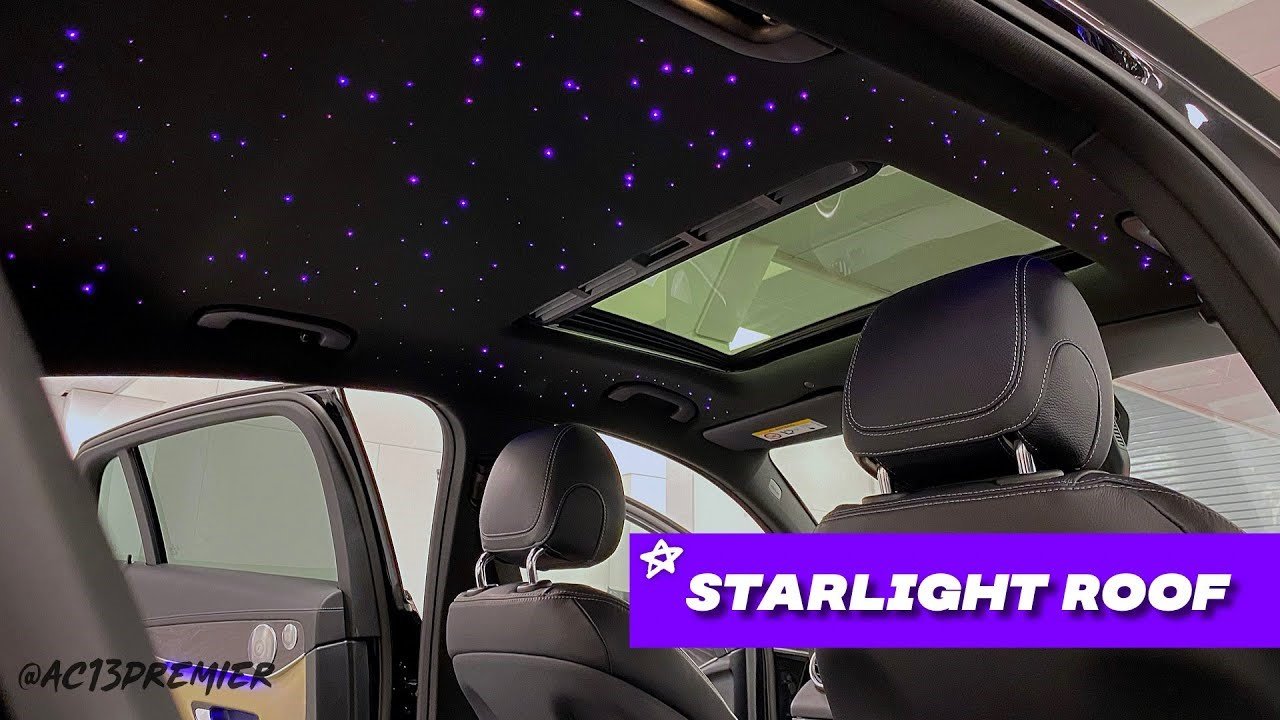If you want to make a starlight roof first, you start to plan the starscape by removing the headliner from the roof of your car. Remove any extra foam or plastic from your headliner’s topside if necessary. These pieces can get in the way of your starscape and make it challenging to create a great one. We’ll next need a method of separating the headliner so that stars can be plotted equally throughout the area.
You will need to draw a grid for your headliner. Start by finding the middle point of each side. If possible, use a measuring tape or a ruler to measure the length. Then find the middle. Draw a line between the opposing sides to connect them. Continue to divide the headliner into smaller grids until you reach a size you are happy with. You can now plan where lights will be placed within each section. Divide the total number of lights in your kit by the number of sections to determine how many lights are contained within each grid. A headliner with 500 lights in 16 sections would have approximately—31 per section. Some prefer lights to be placed in a specific pattern.
Making holes
Next, get your drill or upholstery pins and begin to pinholes in the marks you have made. They should be large enough to allow fiber optic lights to pass through. Continue working in sections until you have punched all of the holes.
Locating the Light Source Location
Before setting fiber optics, decide where your light source should be placed. Consider the dimensions of your light source, the length of your power cable, the length and length of the fiber optics, and the space available to run them out of the headliner.
Some kits can fit directly in the headliner. Larger kits with more power sources will need to be moved to the trunk or under the seats. Make sure that the length of the fiber optics is sufficient to reach the location of your light sources.
Setting fiber optic light bulbs.
It would help if you placed fiber optics closest to the light source section. If you plan to run optics from the headliner to the drunken or dash, you should start with the section nearest to where you will be running the lights. If you are running lights under the C Pillar, for example, cover the area at the back closest to the location.
There are two options when it comes to laying lights. You can punch the lights through the headliner’s cloth and then cut off the ends, or you can fit the lights, so they stop just before the fabric. Both styles have their pros and cons. Punching the lights through will produce a brighter result while setting them behind the fabric will give you a subtler look.
Once you have placed the section of lights in the holes, glue or adhesive will be used to secure them. Hot glue is preferred as it can bend the lights so they fit flush with the headliner.
Tape can be used to clean up lights. Make sure they do not block any holes in the headliner for map lights or other lights. Continue to repeat the process until all lights are in place.
Install your interior trim and headliner
Bench testing is a good idea to ensure all the areas are lit before reinstalling them. Once you are ready to go, remove your headliner and reinstall it into your vehicle. This is best done with assistance as the extra weight of the fiber optics, light engine, and additional weight can make it challenging to handle. You will find the tabs on the ceiling that click most headliners, so make sure you locate them beforehand, so you know where to push. If the light source is outside the headliner, run them to that location before installing the interior trim.
Finishing up, wiring.
You can poke your lights through the headliner with a pair of flush-cut pliers. There are a variety of options when it comes to wiring your engine for power. Most kits include a power cord, which allows you to plug directly into your vehicle’s secondary power outlet. You can also cut off the outlet receiver and use your wiring if you wish to conceal the power cable or use the auxiliary outlet for another purpose.
We recommend using a fuse tap to allow the starlight headliner function to activate during certain functions (e.g., turning the key to accessory mode). It is a good idea to tap into the circuit that powers your car’s interior lights and radios. To locate the correct fuse, refer to your vehicle’s fusebox diagram. Now your starlight roof is ready. You can find a suitable starlight kit to fit your vehicle size here. This simple process will allow you to choose the best starlight kit for your vehicle based on size and star preference.






